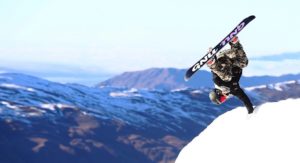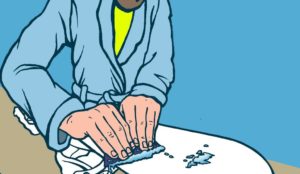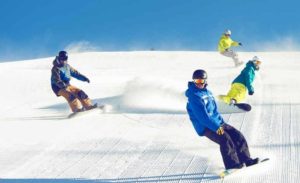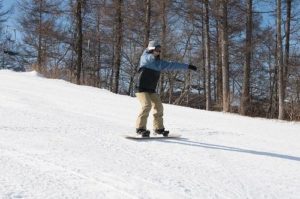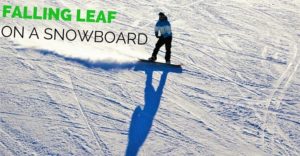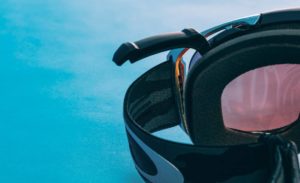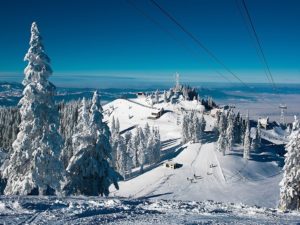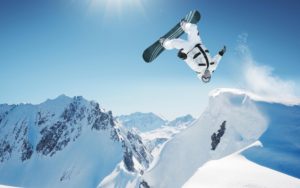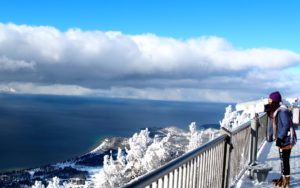Linking Turns is one of the most advanced techniques for snowboarding. To execute them properly you should be comfortable with traversing and performing Garlands. You also need to get used to rising to a straight position and going down to a bent position while traversing. You can do this by practicing how to rise and fall on a flat surface, and then use the same motion while traversing on both edges and maintaining your speed.
Linking Turns is a sequence of traversing, changing edge, and traversing again. Once you are able to link turns, you can consider yourself a ‘real snowboarder’ and you will look like one too! So get in your snowboard pants, put those cool goggles on and let’s train.
Getting Started
Start by finding a groomed, gradual slope, preferably with as little change in contour as possible. It would be better if the area is not crowded so you will not be distracted or nervous because of people watching you. Visualize the run from the top. Make a mental note of where you might make your turns.
The Heelside Turn
 STEP 1
STEP 1
Start by traversing in the same way you learned while doing Garlands. Turn your head and torso to face the direction where you want to travel. Keep your knees bent and your center of gravity low. Only try your first turn when you are comfortable with traversing.
 STEP 2
STEP 2
Start your first turn by shifting your weight forward to point the board downhill. You will accelerate as your board points towards the fall line. At this point, you can always abort your turn by shifting your weight backward slightly and pushing your board up from the fall line using your rear leg, bringing you back to a heelside traverse.
 STEP 3
STEP 3
Halfway in your turn, your board will be pointing straight down and you need to pivot the board from heelside to toeside. Twist your foot to turn the board across the fall line and push the board through the turn using your rear foot. Extend your legs and shift your weight upward as you cross the fall line. Make sure to switch from heelside to toeside swiftly. Without an edge, you will continue to pick up speed and you will likely fall.
 STEP 4
STEP 4
Complete your turn by twisting your front foot further and pushing your board away from the fall line using your rear foot. Turn your head and torso in the direction of your turn. At the end of the turn, you should be comfortably traversing on your toe edge. You have completed your toe-side turn!
 STEP 5
STEP 5
You have now completed your heelside turn and you are traversing back on your toeside.
The Toeside Turn
 STEP 1
STEP 1
This is like the first step of the Heelside turn. Start by traversing and keep your head and torso facing the direction where you want to travel.
 STEP 2
STEP 2
Start your turn by shifting your weight forward to point the board downhill. You will accelerate as your board points towards the fall line. At this point, you can always abort your turn by shifting your weight backwards slightly and pushing your board up from the fall line using your rear leg, bringing you back to a toe side traverse.
 STEP 3
STEP 3
Halfway in your turn, your board will be pointing straight down and you need to pivot the board from toeside to heelside. Twist your foot to turn the board across the fall line and push the board through the turn using your rear foot. Extend your legs and shift your weight upward as you cross the fall line. Make sure to switch from toeside to heelside swiftly. Without an edge, you will continue to pick up speed and you will likely fall.
 STEP 4
STEP 4
Complete your turn by twisting your front foot further and pushing your board away from the fall line using your rear foot. Turn your head and torso in the direction of your turn. At the end of the turn, you should be comfortably traversing on your toe edge. You have completed your heel-side turn!
 STEP 5
STEP 5
Repeat the same steps to make the heel-side turn. Linking turns to look like a ‘real snowboarder’ is simply completing the sequence of traversing, toe-side turning, traversing, and heel-side turning.
Tips
Do not be afraid in linking turns. As long as you have enough confidence in your traversing skills, then making your first turns should not be that scary anymore. Practice small turns on gentle slopes first. The crucial moment in making a turn is when you switch edge: heelside to toeside and toeside to heelside. It is that brief transition phase where your Snowboard is not gripping the snow on either edge that most people lose control and fall.
Once you are comfortable in doing the turns, try to intentionally change the rhythm of your turns by increasing or decreasing the length of each turn randomly or according to the trail. Doing this will give you greater control of your turns. It will also allow you to be able to turn whenever you need to.

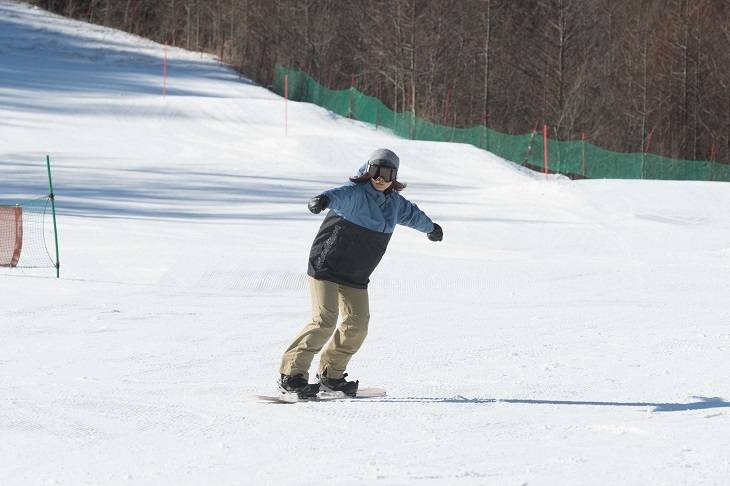
 STEP 1
STEP 1 STEP 2
STEP 2 STEP 3
STEP 3 STEP 4
STEP 4 STEP 5
STEP 5 STEP 2
STEP 2 STEP 3
STEP 3 STEP 4
STEP 4